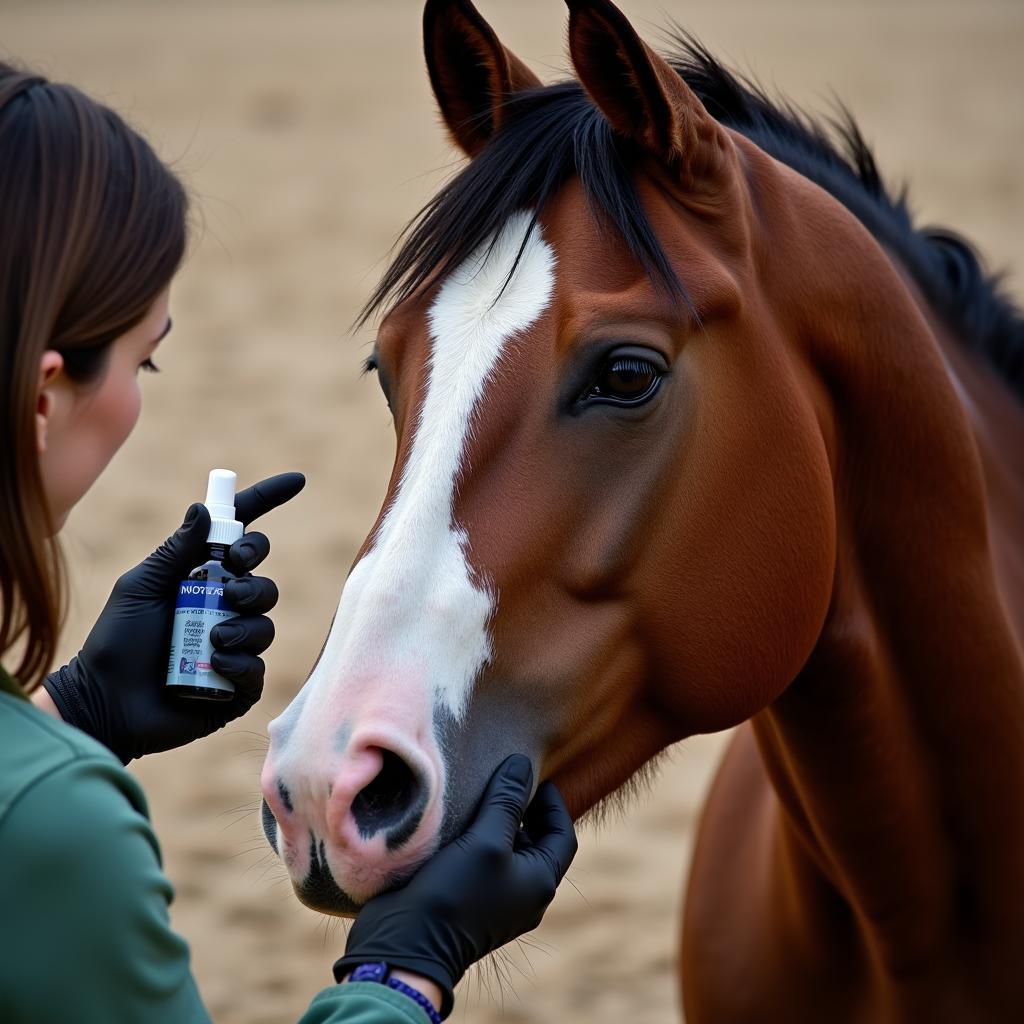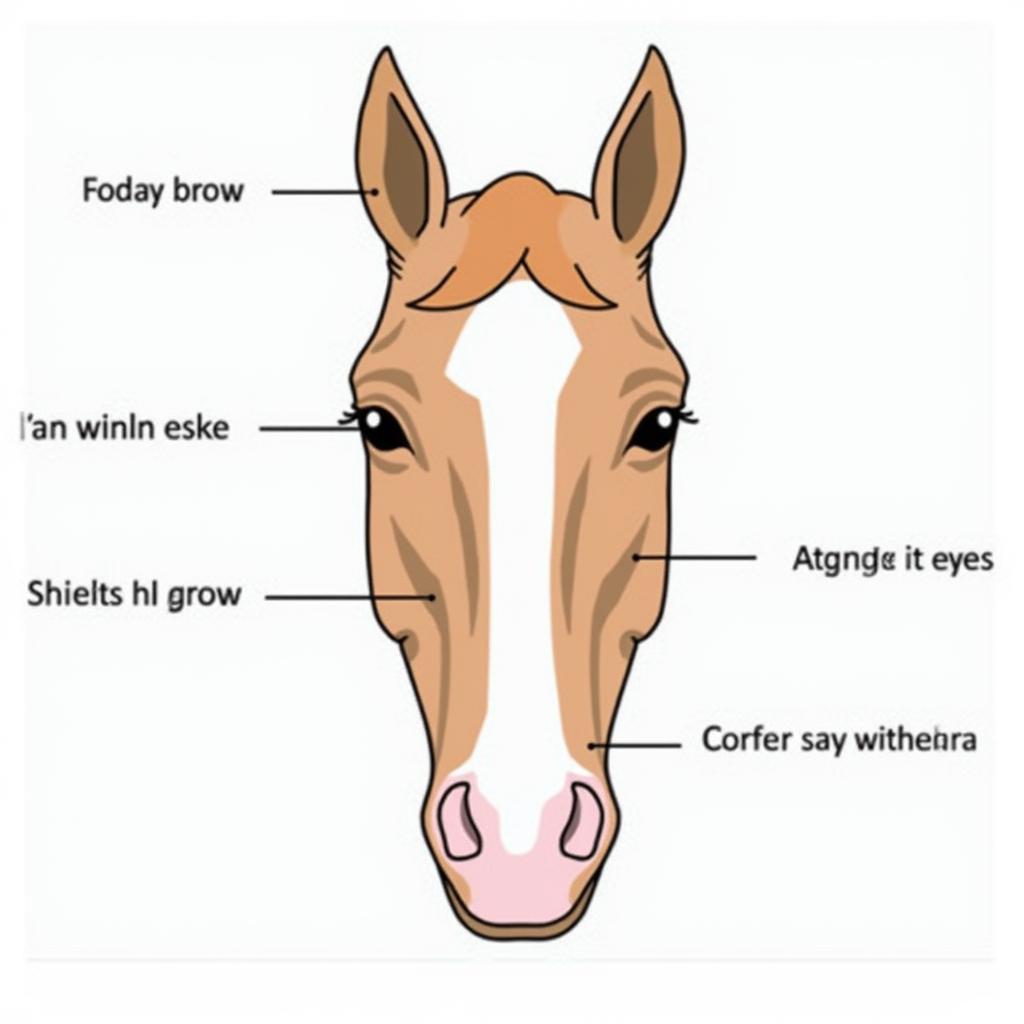Fly Drops For Horses are a crucial part of equine care, offering targeted protection against irritating and potentially disease-carrying flies. These drops provide a convenient and effective method of fly control, contributing significantly to your horse’s comfort and overall well-being during fly season. Choosing the right fly drops and applying them correctly is essential for optimal results.
Understanding the Importance of Fly Drops for Horses
Flies aren’t just a nuisance; they can transmit diseases, cause allergic reactions, and lead to significant stress for your horse. Fly drops, specifically formulated for equine use, provide a barrier against these pests, offering localized protection around sensitive areas like the eyes and ears. By repelling flies, these drops can prevent a range of problems, from simple irritation to more serious health concerns. Protecting your horse from flies is a vital aspect of responsible horse ownership.
Just after the first few warm days of spring, flies start to become a nuisance for horses. Using fly drops effectively can greatly reduce the irritation and potential health risks associated with these pests. Choosing the right fly drops can make a significant difference in your horse’s comfort and well-being. If you’re also concerned about flies bothering you while tending to your horse, you might want to explore options like the best horse fly repellent for humans.
Choosing the Right Fly Drops for Your Horse
The market offers a variety of fly drops, each with its own active ingredients and application methods. Consider your horse’s individual needs, including sensitivity to certain chemicals, the severity of the fly problem in your area, and the duration of protection required. Consulting with a veterinarian can be helpful in determining the most appropriate fly drops for your horse’s specific situation. Some drops offer longer-lasting protection, while others are designed for more sensitive skin.
When it comes to safeguarding your horse’s eyes from potential harm, understanding how to address issues like an ulcer in horses eye is crucial. Don’t hesitate to explore further information on this important topic.
 Applying Fly Drops to a Horse
Applying Fly Drops to a Horse
Applying Fly Drops Correctly
Proper application is crucial for maximizing the effectiveness of fly drops. Always follow the manufacturer’s instructions carefully. Typically, a few drops are applied to specific areas of the horse’s face, avoiding direct contact with the eyes. Some drops require daily application, while others offer longer-lasting protection. Consistency in application is key to maintaining a fly-free environment for your horse. Remember, learning how to make fly spray for horses can offer additional protection against these persistent pests.
Understanding effective fly control strategies goes beyond just using commercial products. Consider exploring homemade bug repellent for horses for natural alternatives.
 Horse Fly Drop Application Areas
Horse Fly Drop Application Areas
Different Types of Fly Drops for Horses
Several types of fly drops are available, each formulated with different active ingredients. Pyrethrin-based drops are a common choice, offering effective fly control. Permethrin-based drops provide longer-lasting protection, while natural fly drops utilize essential oils and botanical extracts for a more gentle approach. Understanding the differences between these options can help you make an informed decision for your horse. Remember, you can also consider how to make fly spray for horses for a more comprehensive fly control strategy.
Fly Drops and Horse Care: A Holistic Approach
Fly control is an integral part of comprehensive horse care. In addition to using fly drops, maintaining a clean and dry stable environment, using fly masks and sheets, and managing manure effectively can significantly reduce fly populations. By implementing a multi-faceted approach, you can create a comfortable and healthy environment for your horse, minimizing the impact of these bothersome pests.
Conclusion
Fly drops for horses are an essential tool for protecting your equine companion from the annoyance and potential health risks associated with flies. By choosing the right product and applying it correctly, you can significantly improve your horse’s comfort and well-being during fly season. Remember to consider your horse’s individual needs and consult with a veterinarian for personalized advice. Incorporating fly drops into a broader fly management strategy will ensure optimal protection and contribute to a healthier, happier horse.
FAQ
- How often should I apply fly drops to my horse?
- Are fly drops safe for all horses?
- What are the common ingredients in fly drops?
- Can I use fly drops in conjunction with other fly control methods?
- What should I do if my horse has a reaction to fly drops?
- How can I store fly drops properly?
- Are there natural alternatives to chemical fly drops?
For support contact us: Phone Number: 0772127271, Email: [email protected] Or visit us at: QGM2+WX2, Vị Trung, Vị Thuỷ, Hậu Giang, Việt Nam. We have a 24/7 customer service team.